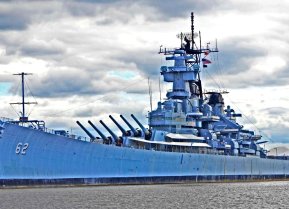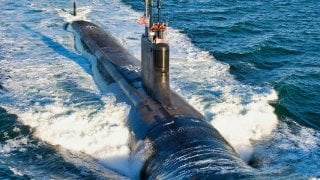Virginia-Class Submarines Get Cut in U.S. Navy Budget—Why?
The U.S. Navy’s fiscal year 2025 budget came with numerous cuts, including to the service’s planned Virginia-class submarine fleet.
Summary: The U.S. Navy's 2025 budget proposes significant cutbacks, including halving its usual order of Virginia-class attack submarines to just one, deviating from the previous four-year trend of acquiring two per year. This reduction has sparked concern among House Armed Services Committee members, who argue that such a move introduces instability into the defense supply chain and undermines the United States' undersea dominance.
U.S. Navy Faces Strategic Setback with Reduced Virginia-Class Submarine Orders in 2025 Budget
The U.S. Navy’s fiscal year 2025 budget came with numerous cuts, including to the service’s planned Virginia-class submarine fleet. According to reports, the latest budget proposal only includes money for one Virginia-class attack submarine instead of the planned two.
Even though the service has been purchasing attack submarines at a rate of two per year over the last four years, an average of 1.2 boats have been delivered annually.
“Simply put, now is not the time to insert instability in the supply chain with uncertainty in procurement rates,” House Armed Services Committee lawmakers argued in the letter penned to the Biden administration in January. “The FY2025 budget will come at a pivotal time for the Virginia-class submarine program and sustaining our unmatched edge in the undersea domain. Any deviation from the planned cadence of the construction and procurement of two submarines per year will reverberate both at home and abroad, with allies and competitors alike.”
In addition to dropping one Virginia-class submarine from the docket, the Navy is also reducing its procurement of Constellation-class guided missile frigates to one.
Introducing the Virginia-Class Subs
As the latest class of nuclear-powered fast attack submarines in the Navy, the Virginia-class hosts a range of cutting-edge capabilities. Twenty-one Virginia-class ships already are in service with the Navy, initially designed as a cheaper alternative to its Seawolf-class predecessors.
The class was first conceptualized in the early 1990s under the moniker of the “Centurion Study.” In order to reduce costs, this submarine class was created using an array of “commercial off-the-shelf” components, including in their data networks and in their computers.
The first large-scale prototype of the Virginia-class was constructed in 2001 by Newport News Shipbuilding and General Dynamics Electric Boat Company. These two manufacturers continue to build the Virginia-class as they remain the only U.S. shipyards capable of constructing nuclear-powered submarines.
Virginia-Class: The Block V variant
The vast majority of the twenty-one Virginia-class submarines in service are the original Block I-Block III variants and only three Block IV subs are in use today. Each ship in this class displaces roughly 8,000 tons and is equipped with hull lengths measuring approximately 377 feet.
The Block V variant was designed with the looming threat of China’s missile capabilities in mind. Specifically, the new cutting-edge Virginia Payload Module (VPM) is intended to rectify the missile gap that exists between the Chinese People’s Liberation Army Navy and the U.S. Navy.
With the incorporation of the VPM, Block V submarines will be able to haul three times as many Tomahawk missiles as their predecessors.
As detailed by the U.S. Naval Institute, “The design will extend the hull by approximately 70 feet to include four so-called Virginia Payload Tubes (VPT) each containing seven Tomahawk Land Attack Missiles (TLAMs). Combined with two six-round VPTs in the bow, the total number of TLAMS per boat increases to 40.”
About the Author: Maya Carlin
Maya Carlin is an analyst with the Center for Security Policy and a former Anna Sobol Levy Fellow at IDC Herzliya in Israel. She has by-lines in many publications, including The National Interest, Jerusalem Post, and Times of Israel. You can follow her on Twitter: @MayaCarlin.


